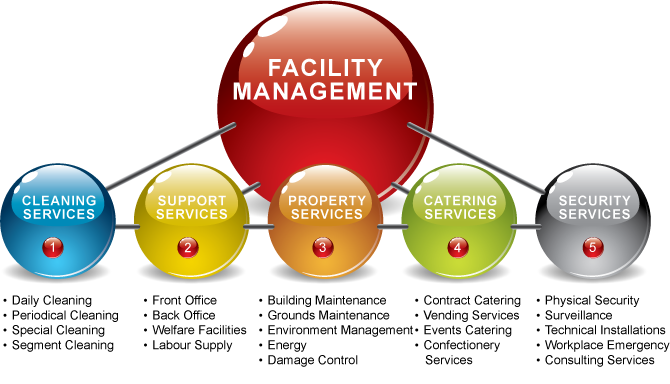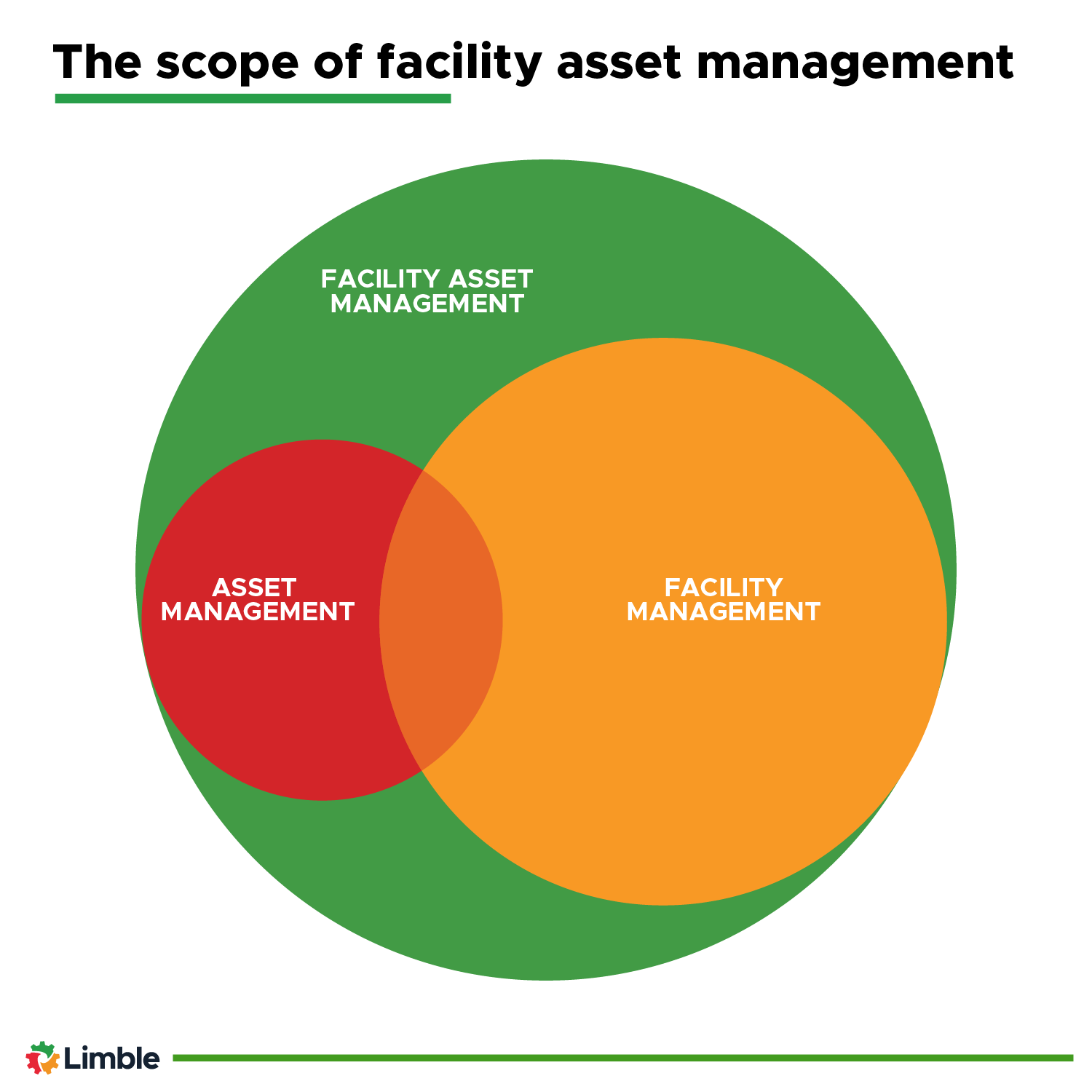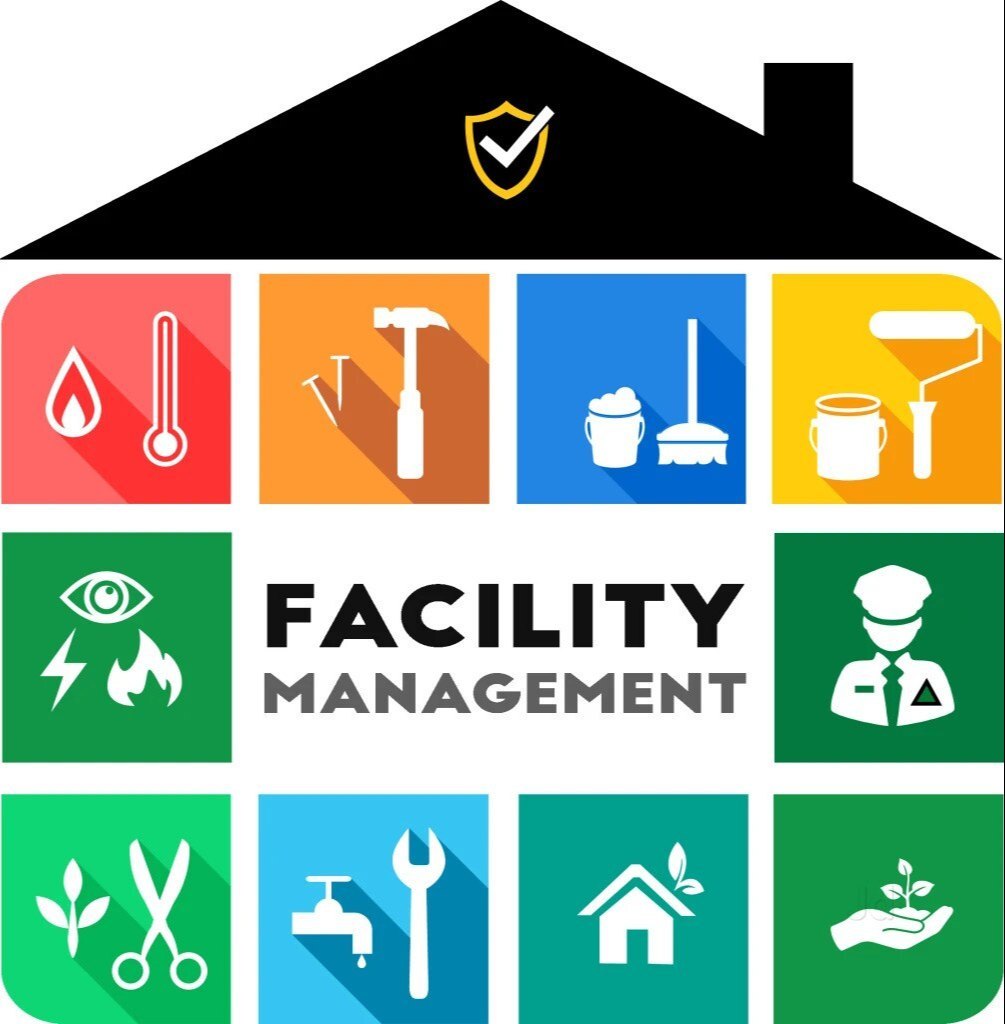Comprehensive Guide to Facility Management for Organizations
Comprehensive Guide to Facility Management for Organizations
Blog Article
Key Fads Forming the Future of Center Management in 2024
As we look in advance to 2024, the landscape of facility management is positioned for considerable makeover, driven by several vital patterns. The integration of clever building technologies and a shift towards data-driven decision-making guarantee to boost operational effectiveness while prioritizing sustainability in technique.
Smart Building Technologies

Smart structure innovations include a wide array of systems, consisting of smart illumination, a/c controls, and safety and security systems. By integrating these systems, facility supervisors can keep an eye on and change specifications in real-time, causing considerable reductions in power waste and operational expenses. Wise sensing units can detect occupancy levels and adjust illumination and temperature level accordingly, making certain that power is only utilized when essential.
Additionally, these modern technologies help with enhanced data collection, permitting organizations to track use patterns and determine possibilities for additional improvements. The execution of clever structure technologies not only adds to sustainability goals however likewise produces healthier work settings that can boost employee productivity and satisfaction.
As we relocate right into 2024, the fostering of smart structure technologies will likely accelerate, mirroring a wider shift in the direction of more intelligent, responsive, and lasting facility administration methods.
Data-Driven Choice Making
Increasingly, organizations are leveraging data-driven choice making to enhance facility monitoring practices. By taking advantage of data analytics, center supervisors can obtain workable understandings that substantially improve operational efficiency and resource appropriation. The assimilation of innovative modern technologies, such as IoT sensors and real-time surveillance systems, allows the collection of substantial quantities of information on building efficiency, occupancy prices, and energy consumption.
This wide range of information allows facility managers to recognize patterns, predict maintenance needs, and proactively address problems before they intensify. As an example, anticipating analytics can anticipate tools failures, decreasing downtime and repair work costs. Additionally, information visualization tools facilitate far better communication among stakeholders, making sure that educated choices are made collaboratively.
Additionally, data-driven strategies boost critical planning by allowing center supervisors to assess the efficiency of existing techniques and make notified choices regarding financial investments in modern technology or infrastructure. As companies progressively prioritize operational quality, data-driven choice production is poised to end up being a keystone of successful center monitoring methods in 2024 and past. Inevitably, the capability to take advantage of information properly will encourage organizations to create a lot more efficient, productive, and durable centers.
Sustainability and Environment-friendly Practices
The emphasis on data-driven choice making normally lines up with the expanding emphasis on sustainability and environment-friendly practices within facility management. As organizations increasingly prioritize ecological responsibility, center supervisors are leveraging analytics to optimize resource use, reduce waste, and minimize carbon impacts. This critical technique makes it possible for the assimilation of energy-efficient systems, such as LED lighting, clever heating and cooling controls, and renewable resource resources right into center operations.
Moreover, the execution of sustainable techniques prolongs beyond energy intake. Facility supervisors are taking on environmentally friendly products and advertising reusing efforts to create a round economic climate within their centers. This not only enhances the environmental account of the company yet additionally fosters a society of sustainability among employees.
Compliance with environmental laws is an additional vital facet driving the adoption of green techniques. By making use of information analytics, center managers can keep track of compliance metrics and determine locations for improvement, making certain adherence to local and worldwide sustainability standards.
Hybrid Work Designs
A considerable shift in the direction of crossbreed job designs is reshaping the landscape of facility monitoring in 2024. This paradigm integrates in-office and remote work, requiring a reevaluation of space application, source appropriation, and worker visit our website involvement techniques. Organizations are progressively identifying the importance of versatile work spaces that cater to diverse demands and preferences.
Facility supervisors need to adapt by applying functional office styles that sustain collective efforts while providing areas for concentrated job. This consists of the combination of innovation to facilitate seamless interaction and collaboration amongst remote and in-office employees. Smart structure remedies, furnished with analytics and sensors, permit for real-time monitoring of room usage, making it possible for companies to optimize their environments effectively.
Furthermore, hybrid work versions stress the need for efficient facility monitoring that focuses on employee experience. This incorporates not only technology and room layout but likewise the growth of plans that promote a balanced work-life dynamic. As firms navigate this change, the duty of center monitoring comes to be pivotal in developing a nimble office that fosters productivity and drives organizational success. Fundamentally, the crossbreed job design is transforming center administration, motivating a proactive technique to fulfill the advancing demands of the labor force.
Boosted Resident Health
As organizations embrace hybrid work versions, an increased focus on passenger wellness is coming to be basics indispensable to facility monitoring strategies. Facility Management. This change acknowledges that a healthy and balanced and completely satisfied workforce straight impacts performance and retention prices. Center managers are currently prioritizing atmospheres that promote physical and mental health, incorporating aspects such as all-natural lighting, biophilic have a peek at this site layout, and accessible wellness resources

Modern technology plays an important duty in this development. Smart structure systems can check environmental aspects and readjust settings in real-time, ensuring ideal comfort degrees - Facility Management. Feedback systems, such as occupancy sensors and employee studies, allow center supervisors to continuously improve wellness campaigns based on resident demands.

Conclusion
In 2024, the future of facility monitoring will be significantly influenced by the combination of wise structure innovations and data-driven decision-making, promoting enhanced functional performance. These patterns jointly emphasize the developing landscape of facility administration in reaction to contemporary difficulties and opportunities.
Center supervisors are promoting and adopting green materials reusing campaigns to develop a circular economy within their centers.A substantial shift in the direction of crossbreed job models is improving the landscape of center administration in 2024.Furthermore, crossbreed work designs stress the requirement for effective center administration that prioritizes worker experience.As companies accept hybrid work versions, an enhanced focus on resident health is becoming indispensable to center management strategies.In 2024, the future of facility management will certainly be substantially affected by the integration of wise building innovations and data-driven decision-making, promoting boosted operational efficiency.
Report this page